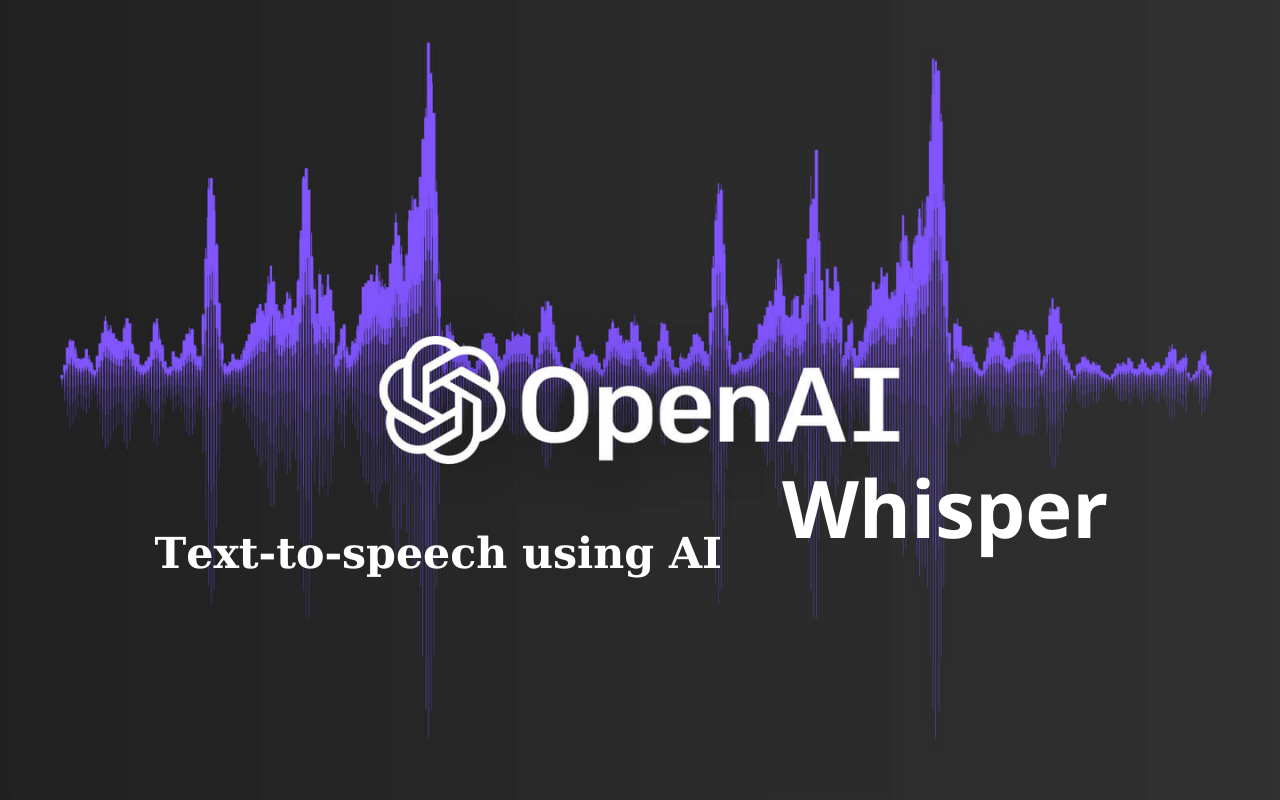In the world of artificial intelligence, a few innovations have captured attention like OpenAI’s new Whisper speech recognition model. Whisper offers groundbreaking text-to-speech capabilities, converting written language into natural, human-like vocalizations with unprecedented accuracy.
As a digital marketer and content creator, I’m thrilled by the possibilities this unlocks. Flawless text-to-speech could revolutionize how we produce and consume online content. But Whisper is still new, and the model isn’t perfect. There are some key factors to understand if you want to utilize Whisper for your own projects.
In this post, I’ll provide a plain English overview of how Whisper works, why it represents such a leap forward, and what you need to know to harness its capabilities for content creation, software products, accessibility tools, and more.

How Whisper Learns Human Speech Patterns
Past text-to-speech systems have relied on a complex pipeline. Engineers manual created linguistic rules, paired with some machine learning, to translate text into appropriate sounds.
Whisper takes a radically different approach, using deep learning techniques to completely model human speech from the ground up.
The backbone of Whisper is a neural network architecture called a tokenizer. This tokenizer was exposed to a massive dataset of text-audio pairs from public-domain audiobooks, absorbing the patterns of how written words correspond to spoken sounds.
From this huge body of examples, Whisper learned to decode text into tiny sound slices. When these slices are stitched together and played in order, they form natural vocalizations matching the input text.
Why Whisper Marks a Major Milestone
Past text-to-speech systems sounded fragmented and robotic. At best, they achieved a basic, understandable translation of language. But the output was stilted, lacking nuance, and clearly inhuman.
Whisper changes everything. By learning entirely from real human speech, Whisper delivers audio that is remarkably smooth, expressive, and natural.
And while no text-to-speech system is perfect, Whisper represents a massive improvement in accuracy. Subtleties like emphasis, tone, pronunciation, verbal pacing, and emotional affect are replicated with stunning precision.
For the first time, synthesized speech approaches the fluidity of human voice-over. This enables a wealth of new applications.
Exciting Use Cases for Whisper
Digital Content Creation
Flawless text-to-speech could transform content production. Rather than hiring voice actors to narrate written scripts, creators can use Whisper to auto-generate vocal tracks. This applies to audiobooks, podcasts, explainers videos, and more.
Accessibility Tools
Whisper unlocks new horizons in accessibility tech. Software that reads webpage text aloud could use Whisper for kinder, more seamless vocal output. The model can even mimic voices, allowing users to choose an audio persona that suits them.
Chatbots and Virtual Assistants
Humanized speech gives chatbots and AI assistants a more natural conversational flow. This builds user trust and improves experiences. I could see Claude or ChatGPT integrating Whisper in future iterations.
Text Analysis
By producing audio from text, Whisper enables fine-grained analysis of writing by listening instead of reading. This could enhance proofreading, plagiarism checking, and readability scoring.
Personalization at Scale
Brands could harness Whisper to generate customized video or audio messages for individual customers. The ability to mimic voices also presents engaging marketing opportunities.
And Much More…
Any application involving the translation of text to speech is a potential use case for Whisper. Its flexibility and accuracy open doors that simply weren’t possible with past text-to-speech technology.
Factors to Consider with Whisper
Of course, Whisper has some key limitations to factor in as well…
It’s Still Early Days
This is bleeding-edge AI. Expect rapid iteration and improvements from OpenAI, but also unpredictability. There could be issues like degraded output quality or temporary availability restrictions as Whisper evolves.
Potential for Bias
Like any ML model, Whisper could inherit and amplify biases from its training data. This could result in uneven accuracy and unfair treatment of marginalized demographic groups. More testing is warranted.
**Ethical Quandaries **
The sophistication of Whisper raises ethical questions. The tech could enable dangerous use cases like impersonation fraud and political disinformation. Plus, there are complex copyright considerations around mimicking voices.
Processing Tradeoffs
Whisper requires serious GPU power. Running the model is expensive, with costs scaling based on usage. This shapes where the tech can be practically deployed. On-device usage may be limited to high-end consumer hardware only.
Regulatory Unknowns
As Whisper propagates, we may see new regulations around synthetic media and voice mimicry. Laws are still catching up to AI, so legal best practices are a moving target.
While exciting, Whisper merits cautious experimentation. As with any powerful technology, we must weigh the pros and cons carefully, while considering social impacts.
Tips for Testing Whisper Yourself
Want to tinker with Whisper for your next project? Here are the best practices I recommend as you get started:
- Sign Up For OpenAI Access – You’ll need approved API credentials for making requests. Review rate limits to plan budgets.
- Start Small – Try a limited proof of concept before scaling up. This lets you gauge quality, cost, risks, etc.
- Focus on Fit – Match use cases to where Whisper adds value. Don’t force it for marginal improvements or unsuitable applications.
- Listen Critically – Audit output thoroughly across contexts. Listen for glitches, inaccuracies, and bias during speech synthesis.
- Review Guidelines – Consult OpenAI’s ethical guidelines for Whisper. Consider adding guardrails like voice watermarks.
- Back-Up Claims – When marketing Whisper’s capabilities, back assertions with examples & metrics. Transparency builds trust.
- Plan for Iterations – Expect improvements in model versions. Build flexibility into your integration and roadmap.
While Whisper is no magic bullet, its advantages are incredible. This technology shapes the future of interfaces and intelligence. By responsibly exploring use cases today, we set the stage for transformative progress tomorrow.
I hope this overview sparks some ideas on how you could leverage Whisper’s powers! Reach out on Twitter @briandean with your thoughts and experiments. This revolution is just getting started.
